Kia Seltos review, test drive
Kia gets it right with the stylish, comfortable and user-friendly Seltos.
Published on Aug 09, 2019 09:00:00 PM
2,46,084 Views
Follow us on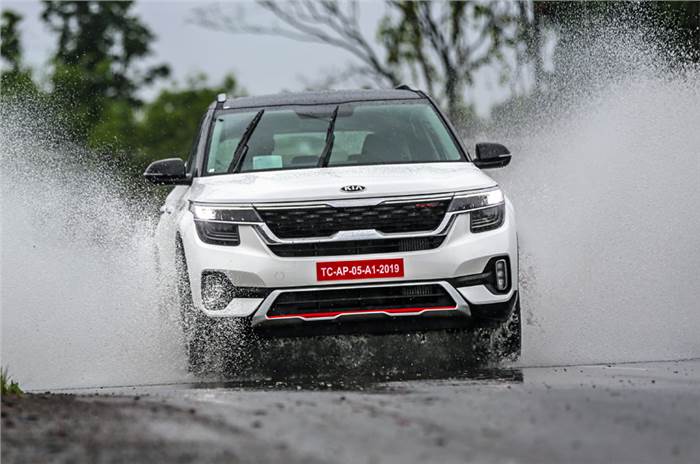
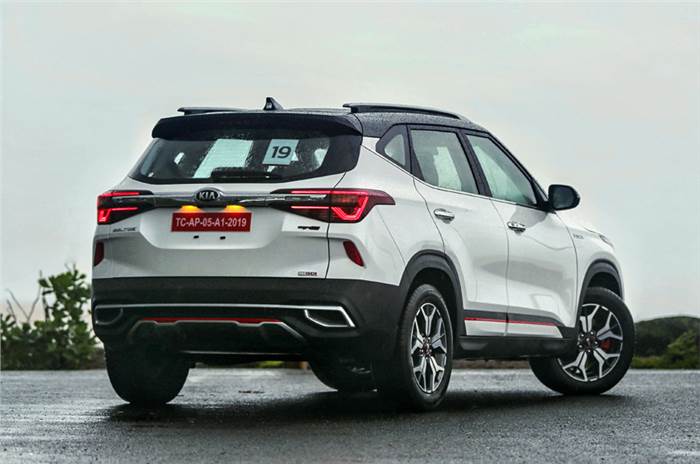
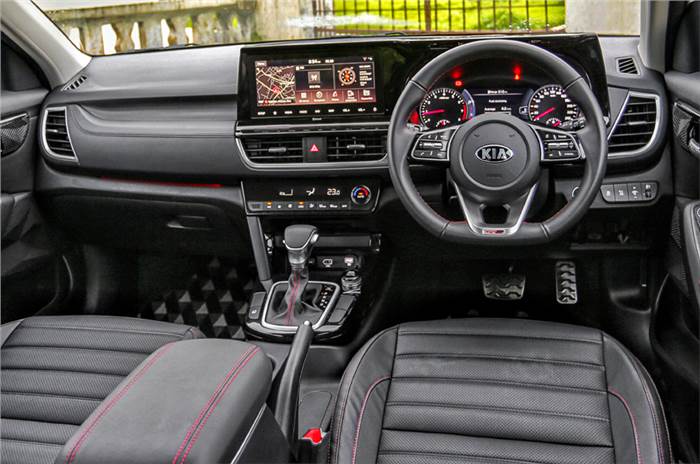
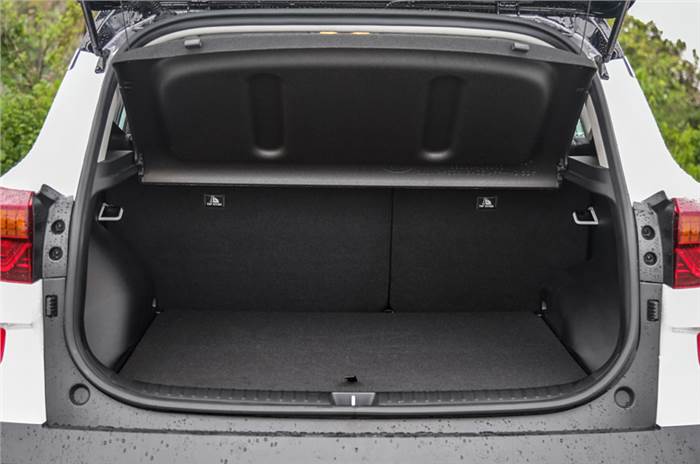
What is it?
You've seen the Kia Seltos' evolution from the SP Concept. You've Googled everything there is to know about it and have probably even read our quick review of the prototype. What we have here is the final product – what you see is what you'll get come August 22, 2019, when the Seltos goes on sale in India.
For those of you who may not know, here’s the background story. The Seltos is Korean carmaker Kia's first model for India and one that will rough it out in the ultra-competitive midsize SUV segment that's so far dominated by its cousin, the Hyundai Creta. Yup, the Seltos has a familial bond with the Creta. Hyundai and Kia come under the umbrella of the Hyundai Motor Company but, save for shared R&D, both entities function independently and are fierce rivals in the markets they operate in.
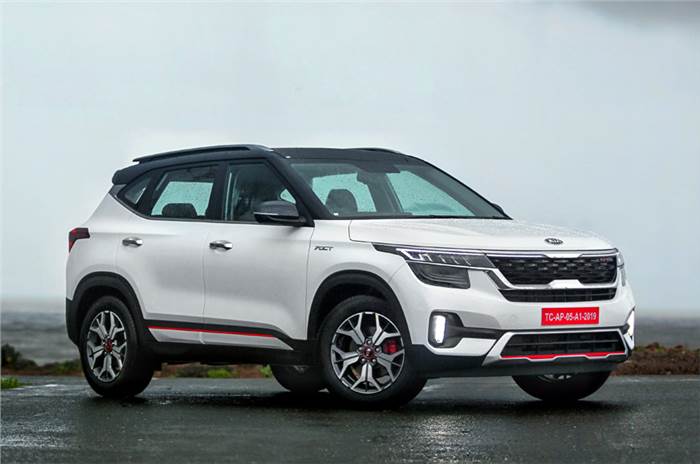
Do note, the Kia Seltos is far removed from the existing Creta, and is actually built on a new platform that will underpin the second-gen Creta that comes in early 2020. The Seltos also uses new generation engines, all of which are BS6 emission norms-compliant. On offer is a 115hp, 1.5-litre naturally-aspirated petrol engine, a 115hp, 1.5-litre diesel, and a 140hp, 1.4-litre turbo-petrol; while 6-speed manual gearboxes are standard fit, each engine gets a different type of automatic transmission option. The 1.5 petrol gets a CVT, the 1.5 diesel is available with a 6-speed torque converter auto, while the 1.4 turbo-petrol can be had with a 7-speed dual-clutch gearbox.
| Kia Seltos Price, Mileage, Specifications, Features and Variants | |
|---|---|
| Brand | Kia |
| Model Name | Seltos |
| Kia Seltos Price | ₹ 13.00 - 24.35 lakh |
| Kia Seltos Range/Mileage | Petrol : 17 - 17.9kpl | Diesel : 19.1kpl |
| Kia Seltos Specifications | SUV | 5 doors | 5 seats View All Specs |
| Kia Seltos Features | LED headlight | 10.25-inch Touchscreen display | 6 airbags View All Features |
| Kia Seltos Variants | Petrol HTE (O) MT | Petrol HTK MT | Diesel HTE (O) MT View All Variants |
We've spent time with the 1.5 diesel-manual and 1.4 turbo-petrol-DCT engines, and the news is good.

What's it like on the outside?
First things first, let's talk size. The Kia Seltos is marginally longer and wider (but also slightly lower) than the Creta. By extension, the Seltos is more on the Nissan Kicks, Renault Duster and Captur side of the midsize SUV field; the Tata Harrier, MG Hector and Mahindra XUV500 are much larger models.
The Seltos might not be a towering SUV per se but it does have reasonable presence. The near-vertical front end and upright pillars give it a traditional SUV stance that Indian buyers tend to like. Kia has also successfully distilled the striking SP Concept's finer points on to the production Seltos, making it an SUV that will hold your attention. The ‘tiger nose’ grille, large headlamps and stylish bumper give the Seltos a distinctive face and what makes the look even more special is the level of detailing. The chrome surround for the grille, for instance, sports a very premium knurled effect. Equally special is the lighting. The full-LED headlights, the streak-like LED indicators and the ‘ice cube’ fog lights are brilliantly done, and there’s also an LED strip that runs from the headlights to the snout, accentuating the Kia’s width.
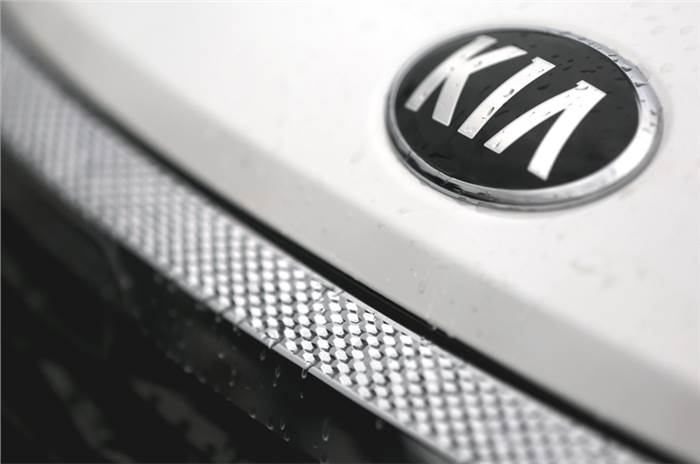
Interestingly, the Seltos will be available in two styles – Tech Line and GT Line – with each having its own trims. The 1.5 petrol and diesel versions will come in Tech Line form while the sportier GT Line will be exclusive to the 1.4 turbo-petrol. GT Line Seltos models, like the one pictured here, are identifiable by their slick crystal-cut alloy wheels, GT Line badging and red accents on the bumpers and sides. Curiously though, only the front brake calipers come finished in red.
In profile, the Seltos looks well balanced and stands confident on its 17-inch wheels. Of the other things of note, the glasshouse tapers at the rear and there’s also the option of a contrast roof that adds glamour to the look. The Seltos’ tail is neatly done as well. Once again, the tail-light’s LED signature helps identify the Seltos from a distance, while the rear bumper, with its scuff plate, brings in the necessary dose of ruggedness.
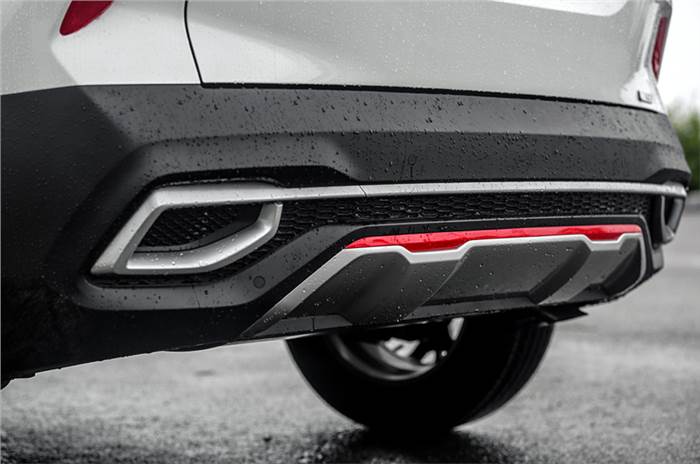
What’s it like on the inside?
The Seltos’ cabin sits at a convenient height so getting in and out of it is a breeze. And what helps to become instantly comfortable in the Kia is the good view out. Once settled in on the comfy front seats, you are sure to appreciate the sheer level of quality in the interior. Forget rivals, the Seltos’ cabin quality is up there with that of far pricier European cars. Fit and finish is excellent and there are enough quality bits to make you feel you’ve got more than your money’s worth. The leatherette seats are rich in look, the flat-bottomed and leather-wrapped steering is great to hold, and the soft-touch panel on the dash only ups the ambience further. Even the larger panels on the doors and dashboard feel built to last and there is a richness to the smaller controls too. In keeping with their exterior themes, Tech Line versions get black-on-beige interiors while GT Line versions feature all-black interiors, with superbly executed red stitching on the seats, steering and gear lever adding the right dose of colour.
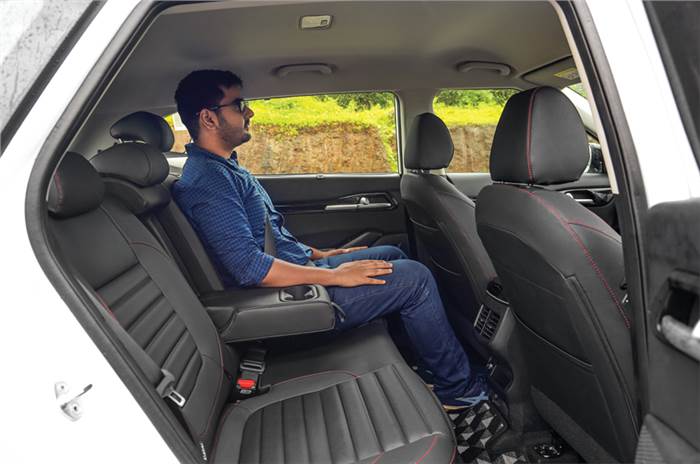
Much in line with the latest trends, the Kia’s neat dashboard positions the infotainment system high up and in the driver’s line of sight. Base models feature a 2-DIN audio system, mid-spec versions get an 8.0-inch touchscreen, while higher-spec versions (like the one pictured here) get a 10.25-inch touchscreen. The touchscreen is slick, well laid-out and handily offers a split screen mode, so you can access two functions at the same time. The touchscreen is your go-to control for most functions but passengers might find the screen-based volume controls cumbersome to use. Drivers, however, can operate the basics via the steering-mounted buttons and we were quite impressed by the voice-activated functions too. A cool inclusion on top-spec Seltos’ is a 7.0-inch multi-info display in the instruments console that shows turn-by-turn navigation instructions, among other things. GT Line GTX versions go one up with their 8.0-inch head-up displays. The retractable screen displays speed and navigation details and minimises the need for drivers to take their eyes off the road.
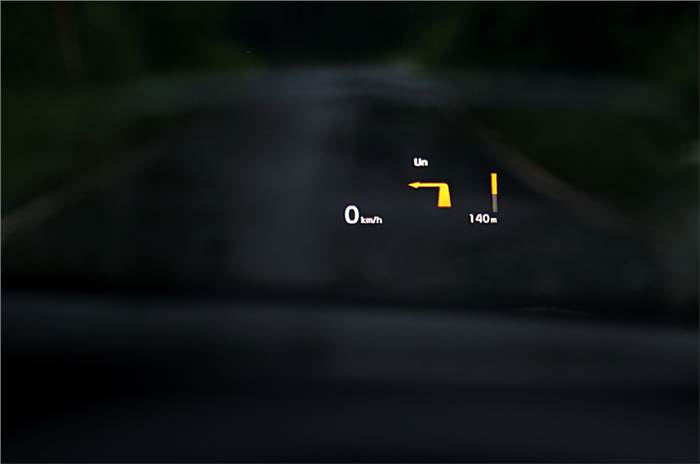
Passengers at the back have it rather nice as well. Sure, legroom is down on larger models like the Harrier and Hector but you really can’t complain about the space on offer – it’s up on like-sized models like the Creta. There’s also reasonable headroom at the back and enough width to seat three abreast in comfort; a near-flat floor also makes life that bit nicer for the middle passenger. The seat cushioning is well judged but we do wish the squab was longer and offered more thigh support. Kia has done well to build in some level of adjustability into the rear seating, with a backrest that can be reclined by 6 degrees. The well-positioned armrest and large rear windows, with manually retractable sun visors, are other elements that are sure to get a thumbs up from rear-seat occupants.
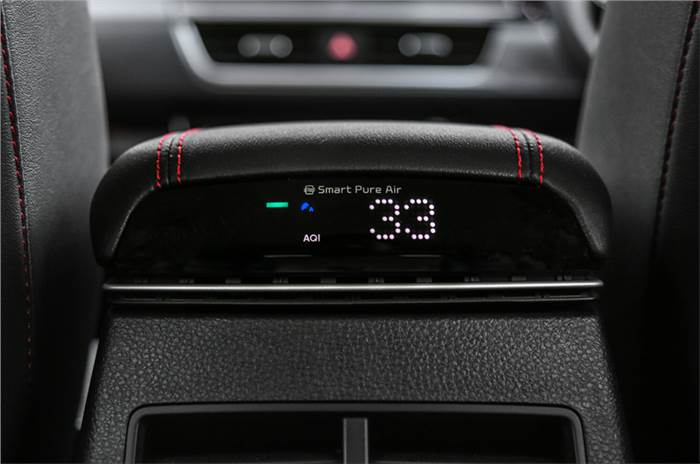
The Kia Seltos also scores well in terms of practicality. There’s a large bottle holder on each of the doors, cupholders for front and rear seats, and a reasonably-sized storage bay under the front armrest. To nitpick, the wireless charging bay at the base of the centre console isn’t all that easy to access. There’s also ample room for luggage. The 433-litre boot is well shaped and you also the option to fold the 60:40 rear seats flat to make more space.
How well equipped is it?
In terms of equipment, the Kia offers all that you’d want and then some more. Top versions of both, the Tech Line and GT Line get LED headlights, auto headlights, tyre pressure monitoring system, an electric sunroof (albeit not panoramic), ventilated front seats, a powered driver’s seat, a 400W Bose sound system, front and rear parking sensors, wireless phone charging and ambient lighting. Also unique to the Seltos, and a handy function in times of deteriorating air quality, is an onboard air purifier with three selectable fragrances. As you’d expect, the 10.25-inch touchscreen infotainment unit comes bundled with Android Auto and Apple CarPlay. Also part of the package is Kia’s eSIM-based UVO connected tech that packs in 37 features, including live location, geo-fencing, panic notification and remote engine start/stop (only on automatics). The connected tech works well but its performance is a function of network access, so don’t expect it to work flawlessly at all times.

It’s important to mention here that Kia will bring in top-spec versions of the 1.4 turbo-petrol-auto and the 1.5 diesel-automatic only a month after the Seltos’ launch. There’s also some discrepancy between features offered on the Tech Line and GT Line versions, with the latter equipped with more safety equipment and creature comforts. Only GT Line Seltos units get all-wheel disc brakes, side and curtain airbags and electronic stability control. Rain-sensing wipers, head-up display, a 360-degree camera and blind-view monitor are also unique to the range-topping GT Line versions.
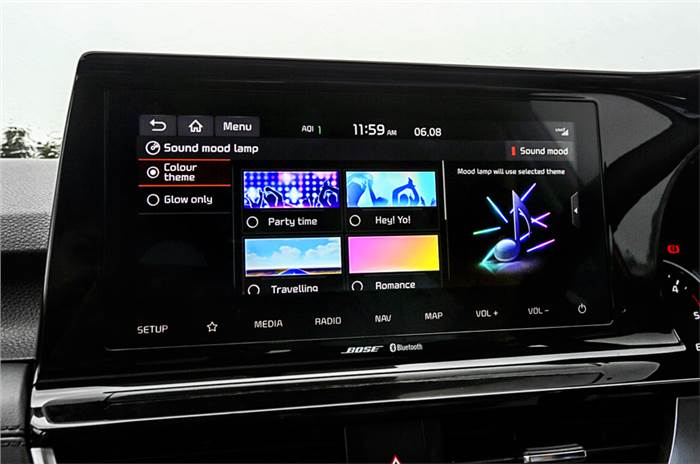
What’s it like to drive?
The Seltos 1.4 turbo-petrol is intended for keen drivers and easily feels a cut above the existing petrol midsize SUVs. The engine runs smooth and quiet at low revs and feels at home in urban environs. However, you don’t have to work the engine too hard to get to the good stuff, especially when it’s allied to the DCT automatic. A prod on the accelerator will have the 7-speed gearbox snap down the requisite ratios to get the engine in to the meat of the powerband. The 140hp and 242Nm engine feels gutsy, and revs quite readily past 6,000rpm, even if the top end isn’t quite crescendo-like. Drivers will like the throaty exhaust note but overall refinement is still half a notch down compared to VW’s turbocharged TSI units. Again, while the Kia’s 7-speed dual-clutch auto is diligent and quick, shifts are sometimes not as seamless as what we’ve experienced on VW’s DSG units. That said, there’s much fun to be had taking manual control via the gear lever. The system is responsive and what’s even better is that it allows high rpm downshifts. The only things that are missed are paddleshifters.
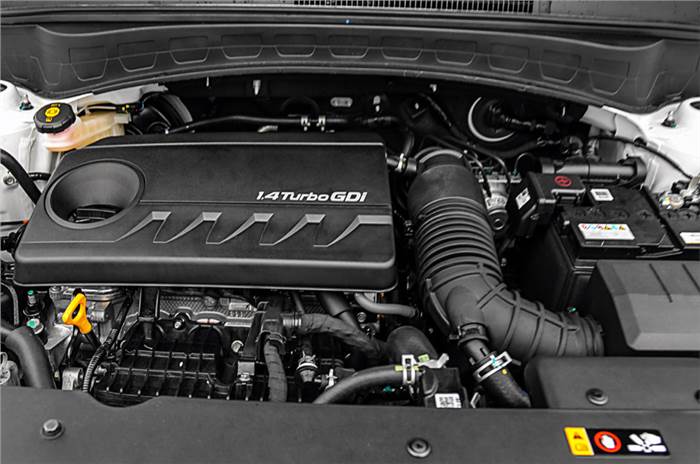
Dual-clutch auto-equipped Seltos turbo-petrols in GTX spec distinguish themselves by being the only ones in the range to offer driving and traction modes. The three driving modes – Eco, Normal and Sport – not only alter engine characteristics but also steering weight. We didn’t note all that big a difference between Eco and Normal modes, though Sport did spice up the driving experience. The added weight at the steering wheel gives a good feeling of connect with the Seltos and you’ll like how neatly it turns in to corners. It’s not absolutely pointy and there is some roll too but the Seltos changes direction with poise. Drivers familiar with the Creta, in particular, will immediately get the feel of sitting in a stiffer, better-tuned SUV. The Seltos also feels far more sophisticated in its ride. Unlike the Creta whose suspension feels overly soft at high speeds, the Seltos’ feels confident at all speeds. There is some up and down motion but body movements are well controlled on the whole. Low-speed ride quality is also good – absorbent without feeling harsh. As is often the case, the traction control modes, namely Mud, Snow/Wet and Sand, didn’t result in a perceivable difference to the experience at the wheel.
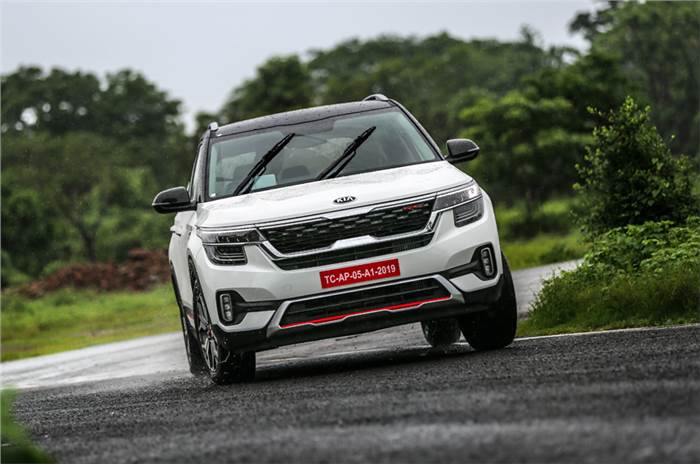
We also drove the Seltos diesel-manual and found the setup rather likeable. The steering is easy to twirl yet has fair weight at higher speeds, and the suspension does its bit to flatten the bumps and lumps on our roads. However, the Seltos still feels like an urban SUV, much like the Creta does, and doesn’t feel as rugged as the Kicks, Captur and Harrier. There’s no all-wheel drive either, though that’s unlikely to be a deal breaker for most buyers in the segment.
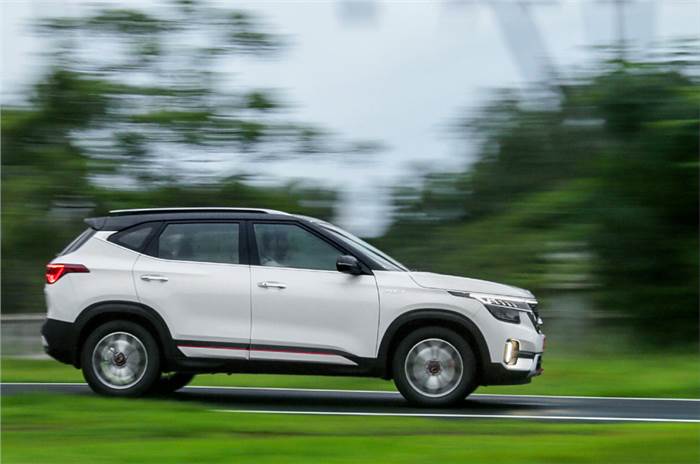
The Seltos’ 115hp/250Nm 1.5 diesel engine is a delight. It’s remarkably refined and even improves on the Creta’s 1.6 diesel in NVH. Interestingly, this 1.5-litre engine will not only power future Kias but will also be the mainstay of Hyundai’s diesel line-up in India, following the transition to BS6. Performance is admirable too. You can feel a step up in power around 2,000rpm but the build of power on the whole is linear and very friendly. The engine’s tractability means you can often get by in a higher gear than warranted. Not that the slick 6-speed gearbox and well-weighted clutch are a chore to operate. Press on in the Seltos diesel and it will breach 5,000rpm without feeling out of depth. Still, the main reason to consider the diesel would be its economy. Kia claims an official figure of 21kpl for the diesel manual.
Should I buy one?
We’re scratching our heads thinking of why you wouldn’t want to buy a Seltos. Okay, Kia isn’t an established name in India and aftersales service and quality is an unknown for now. Then again, Hyundai was also an unknown entity in India, once upon a time.
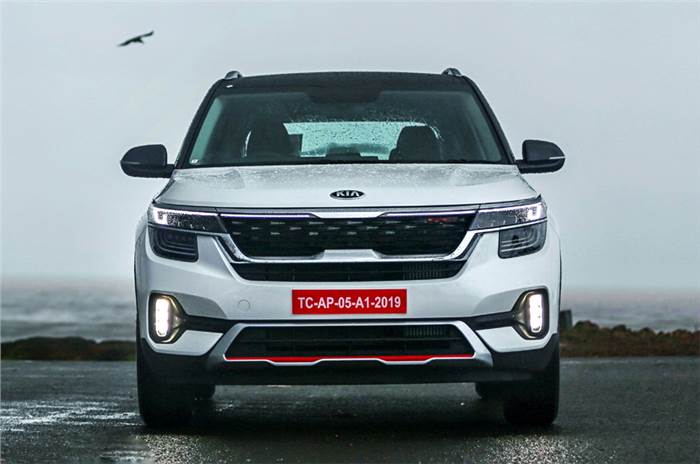
As a product, the Seltos is hard to fault. It’s stylish, comfortable, well-built and really well-equipped. We’re yet to sample all engine-gearbox options but if the 1.4 turbo-petrol automatic and 1.5 diesel-manual are anything to go by, there’s much to like about the way it drives as well. To make the package even more enticing, Kia has launched the SUV with an aggressive price tag. Seltos prices range between Rs 9.69-13.79 lakh for the 1.5 petrol, Rs 9.99-15.99 lakh for the 1.5 diesel and Rs 13.49-15.99 lakh for the 1.4 petrol (ex-showroom, pan-India), which would put it bang in the heart of the midsize SUV segment. At this price point, the Seltos would be hard to pass over. Kia is here, and how!
PHOTOGRAPHY: GAURAV THOMBRE
Click here for Kia India models, prices, reviews, images, videos and more
Tech Specs 
Copyright (c) Autocar India. All rights reserved.





 Engine
Engine Transmission
Transmission Efficiency
Efficiency Dimensions
Dimensions
Comments
Member Login
Personal Details
No comments yet. Be the first to comment.